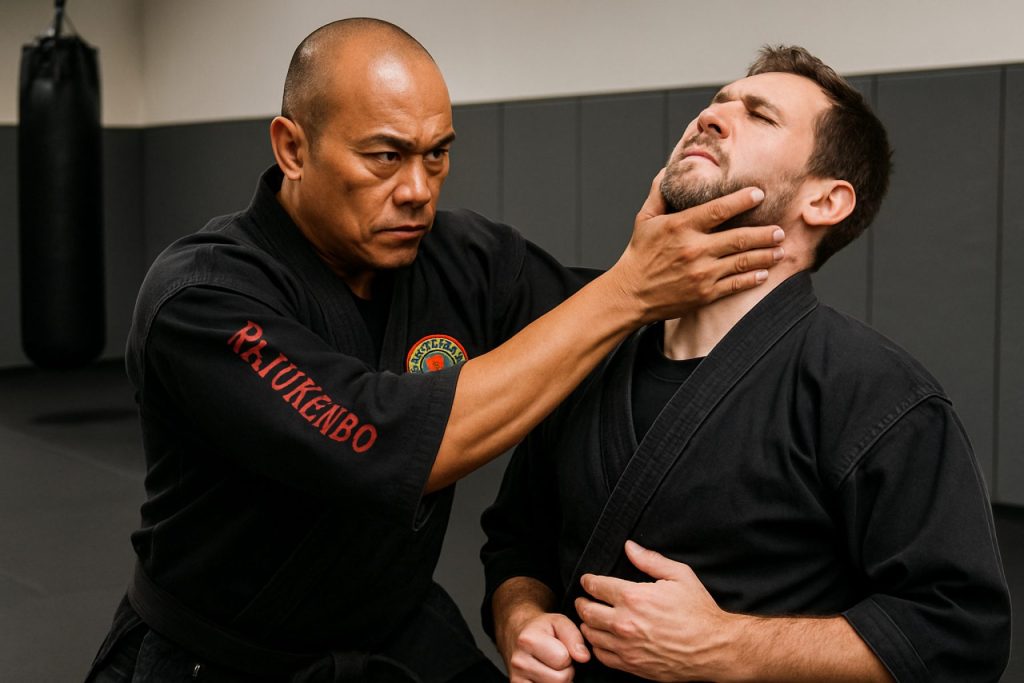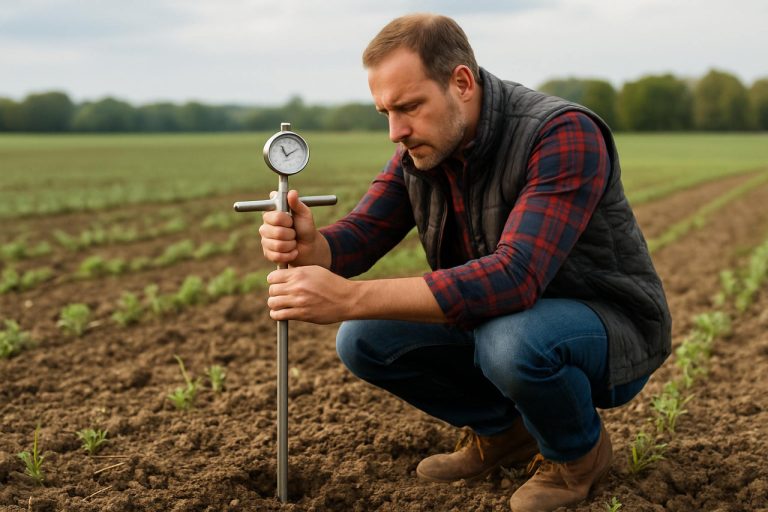
Unlocking the Power of Kajukenbo: How This Dynamic Martial Art Blends Five Disciplines for Unmatched Self-Protection. Discover the Origins, Techniques, and Modern Impact of Kajukenbo.
- Origins and History of Kajukenbo
- The Five Martial Arts Behind Kajukenbo
- Core Principles and Philosophy
- Signature Techniques and Training Methods
- Kajukenbo in Modern Self-Defense
- Notable Practitioners and Influences
- Comparing Kajukenbo to Other Martial Arts
- Getting Started: Training and Dojos
- Kajukenbo’s Global Reach and Community
- Sources & References
Origins and History of Kajukenbo
Kajukenbo originated in the late 1940s in the Palama Settlement of Oahu, Hawaii, as a pragmatic response to the violent street environment faced by local residents. Its creation is credited to five martial artists—Adriano Emperado (Kenpo), Peter Choo (Karate), Frank Ordonez (Judo), Joseph Holck (Jujutsu), and Clarence Chang (Kung Fu)—who sought to develop a system that combined the most effective elements of their respective disciplines. The name “Kajukenbo” itself is a portmanteau, reflecting its roots: “Ka” for Karate, “Ju” for Judo and Jujutsu, “Ken” for Kenpo, and “Bo” for Chinese Boxing (Kung Fu).
The founders trained together, rigorously testing techniques through full-contact sparring and real-world scenarios. Their goal was to create a martial art that was adaptable, practical, and effective for self-defense, especially against the types of street violence prevalent in post-war Hawaii. Kajukenbo’s curriculum was thus shaped by necessity, emphasizing adaptability and the ability to continue fighting even when injured or outnumbered.
As Kajukenbo proved its effectiveness, it spread beyond Hawaii, particularly to the mainland United States, where it continued to evolve. Practitioners often adapted the art to suit their own needs, leading to the development of various branches and interpretations. Despite these variations, the core philosophy of Kajukenbo—practical self-defense, continuous improvement, and openness to innovation—remains intact. Today, Kajukenbo is recognized as one of the first American hybrid martial arts, with a global presence and a reputation for realism and effectiveness in self-defense situations (Kajukenbo Self Defense Institute).
The Five Martial Arts Behind Kajukenbo
Kajukenbo is a unique hybrid martial art, developed in Hawaii in the late 1940s, that draws its effectiveness from the integration of five distinct fighting systems. Each of these arts contributed specific techniques and philosophies, shaping Kajukenbo into a comprehensive self-defense system. The name “Kajukenbo” itself is an acronym derived from the first letters of these five arts: Karate, Judo, Jujutsu, Kenpo, and Boxing.
- Karate: Primarily from the Japanese and Okinawan traditions, Karate contributed powerful linear strikes, blocks, and stances, emphasizing speed and precision in both offense and defense.
- Judo: Judo’s influence is seen in Kajukenbo’s throws, sweeps, and grappling techniques. The art’s focus on leverage and balance allows practitioners to subdue opponents regardless of size.
- Jujutsu: Jujutsu added joint locks, submissions, and close-quarters combat skills. Its adaptability and use of an opponent’s force are central to Kajukenbo’s self-defense philosophy.
- Kenpo: Kenpo, particularly the Hawaiian and Chinese variants, contributed rapid-fire hand strikes, fluid combinations, and circular movements, enhancing Kajukenbo’s versatility in striking.
- Boxing: Western Boxing provided footwork, head movement, and powerful punches, rounding out Kajukenbo’s striking arsenal and improving its effectiveness in real-world confrontations.
By synthesizing these five martial arts, Kajukenbo became a dynamic and adaptive system, designed to address a wide range of self-defense scenarios. This blend remains at the core of its curriculum and philosophy today Kajukenbo Self Defense Institute.
Core Principles and Philosophy
Kajukenbo’s core principles and philosophy are deeply rooted in its origins as a pragmatic self-defense system developed in the late 1940s in Hawaii. The founders—Adriano Emperado, Peter Choo, Frank Ordonez, Joseph Holck, and Clarence Chang—sought to create a martial art that was effective in real-world situations, blending techniques from karate, judo, jujutsu, kenpo, and boxing. This eclectic approach is reflected in the art’s name, which is a portmanteau of these contributing styles.
Central to Kajukenbo’s philosophy is adaptability. Practitioners are encouraged to modify techniques to suit their own physical abilities and the demands of specific situations. This flexibility is supported by a strong emphasis on practical application over rigid adherence to tradition. The system prioritizes efficiency, directness, and the ability to respond to unpredictable threats, making it highly relevant for self-defense.
Another key principle is the cultivation of a “warrior spirit.” Kajukenbo training stresses mental toughness, perseverance, and the development of confidence. Students are taught to remain calm under pressure and to use their skills responsibly, with a focus on self-control and respect for others. The art also values continuous learning and evolution, encouraging practitioners to integrate new techniques and concepts as martial arts progress.
Overall, Kajukenbo’s philosophy is encapsulated in its motto: “The best defense is not to be there.” This highlights the importance of awareness, avoidance, and de-escalation, alongside physical techniques. The system’s core values and principles are detailed by organizations such as the Kajukenbo Self Defense Institute and the Kajukenbo Association of America.
Signature Techniques and Training Methods
Kajukenbo is renowned for its pragmatic and adaptive approach to self-defense, blending techniques from karate, judo, jujutsu, kenpo, and boxing. Its signature techniques emphasize efficiency, fluidity, and the ability to transition seamlessly between striking, grappling, and joint manipulation. Practitioners are trained to respond to real-world threats with a combination of rapid strikes, low kicks, throws, and submissions, often chaining these elements together in unpredictable ways.
One hallmark of Kajukenbo is its use of “rapid-fire” hand strikes, such as the hammerfist, backfist, and palm heel, often delivered in quick succession to vital targets. Low-line kicks to the knees and shins are favored for their effectiveness in disabling attackers. The system also incorporates judo and jujutsu-based throws and takedowns, allowing practitioners to control or neutralize opponents at close range. Joint locks and submissions, adapted from kenpo and jujutsu, are used both defensively and offensively, reflecting Kajukenbo’s hybrid nature.
Training methods in Kajukenbo are equally distinctive. Classes typically include rigorous conditioning, repetitive drilling of techniques, and scenario-based self-defense exercises. “Streetwise” sparring, which simulates real attacks, is a core component, encouraging adaptability and resilience under pressure. Forms (kata) are practiced to instill muscle memory and fluid movement, but the emphasis remains on practical application rather than tradition. This blend of structured drills and dynamic, reality-based training ensures that Kajukenbo practitioners are well-prepared for unpredictable situations Kajukenbo Self Defense Institute of Hawaii Black Belt Magazine.
Kajukenbo in Modern Self-Defense
Kajukenbo has established itself as a highly adaptable and practical martial art for modern self-defense, blending techniques from karate, judo, jujutsu, kenpo, and boxing. Its core philosophy emphasizes real-world applicability, making it particularly relevant in contemporary settings where unpredictable threats may arise. Practitioners are trained to respond to a wide range of scenarios, including armed and unarmed attacks, multiple assailants, and close-quarters confrontations. The system’s curriculum incorporates striking, grappling, joint locks, throws, and ground defense, ensuring a comprehensive approach to personal safety.
A distinguishing feature of Kajukenbo in modern self-defense is its focus on adaptability and improvisation. Students are encouraged to modify techniques based on their environment, physical abilities, and the nature of the threat. This pragmatic mindset is reinforced through scenario-based training and stress drills, which simulate real-life encounters and help practitioners develop quick reflexes and decision-making skills under pressure. The art’s evolution continues as instructors integrate new tactics and address emerging threats, such as those posed by modern weapons or urban environments.
Kajukenbo’s effectiveness in self-defense has been recognized by law enforcement and security professionals, who often incorporate its principles into their training. Its emphasis on awareness, de-escalation, and assertive response aligns with best practices in personal protection. As a result, Kajukenbo remains a relevant and respected choice for individuals seeking practical self-defense skills in today’s world (Kajukenbo Self Defense Institute).
Notable Practitioners and Influences
Kajukenbo’s development and global spread have been shaped by a number of influential practitioners whose contributions have defined the art’s character and reach. The system was originally founded in the late 1940s in Hawaii by five martial artists: Adriano Emperado, Peter Choo, Frank Ordonez, Joseph Holck, and George Chang. Among these, Sijo Adriano Emperado is often recognized as the principal architect and the most prominent figure in Kajukenbo’s history, guiding its evolution and ensuring its adaptability to real-world self-defense scenarios. Emperado’s leadership and teaching style emphasized practicality, inclusivity, and continuous innovation, which became hallmarks of the system.
Other notable practitioners include Al Dacascos, who played a significant role in popularizing Kajukenbo on the U.S. mainland and internationally. Dacascos’s efforts in teaching and demonstration helped establish Kajukenbo schools across the globe, and his lineage has produced several prominent martial artists, including his son, Mark Dacascos, a well-known actor and martial artist. Additionally, practitioners like Charles Gaylord and Tony Ramos contributed to the development of distinct branches within Kajukenbo, each emphasizing different aspects such as striking, grappling, or internal arts.
Kajukenbo’s influence extends beyond its own practitioners, as it has contributed to the evolution of modern mixed martial arts and self-defense training. Its open, adaptive philosophy has inspired cross-training and integration with other systems, reflecting the founders’ original intent to create a comprehensive and effective martial art. The legacy of these notable figures continues to shape Kajukenbo’s growth and relevance in the global martial arts community (Kajukenbo Self Defense Institute of Hawaii).
Comparing Kajukenbo to Other Martial Arts
Kajukenbo stands out among martial arts for its eclectic and adaptive approach, blending techniques from karate, judo, jujutsu, kenpo, and Chinese boxing (kung fu). This hybrid nature was intentional, designed to create a practical self-defense system that could address a wide range of real-world threats. In contrast, many traditional martial arts, such as Shotokan Karate or Judo, focus on a more defined set of techniques and philosophies rooted in their country of origin and historical context. For example, Shotokan emphasizes linear strikes and kata, while Judo prioritizes throws and grappling, often within a sporting framework.
Kajukenbo’s curriculum is notably broad, incorporating striking, grappling, joint locks, throws, and weapon defenses. This versatility is similar to modern mixed martial arts (MMA), but Kajukenbo predates the MMA movement by several decades and maintains a strong emphasis on street self-defense rather than competition. Unlike Brazilian Jiu-Jitsu, which specializes in ground fighting, Kajukenbo practitioners are trained to defend themselves in all ranges and situations, including standing, clinch, and ground scenarios.
Another distinguishing feature is Kajukenbo’s philosophy of constant evolution. Schools and instructors are encouraged to adapt techniques to suit changing threats and individual needs, a flexibility not always found in more traditional systems. This pragmatic mindset has contributed to Kajukenbo’s reputation as a highly effective and realistic martial art for self-defense, as recognized by organizations such as the Kajukenbo Self Defense Institute of Hawaii and the Kajukenbo Association of America.
Getting Started: Training and Dojos
Getting started in Kajukenbo involves finding a reputable dojo (training school) and understanding the unique training environment this hybrid martial art offers. Kajukenbo dojos emphasize practical self-defense, blending techniques from karate, judo, jujutsu, kenpo, and boxing. Beginners can expect a curriculum that balances striking, grappling, and situational awareness, often tailored to real-world scenarios. Classes typically begin with warm-ups and conditioning, followed by drills in striking, blocking, throws, and joint locks. Sparring and self-defense simulations are common, fostering adaptability and resilience.
When searching for a Kajukenbo dojo, it is important to look for instructors certified by recognized organizations, such as the Kajukenbo Self Defense Institute or the Kajukenbo Association of America. These bodies maintain standards for teaching and lineage, ensuring students receive authentic instruction. Many dojos welcome beginners of all ages and fitness levels, emphasizing respect, discipline, and personal growth alongside physical skills.
Prospective students should visit local dojos, observe classes, and speak with instructors about their teaching philosophy and experience. Some schools offer trial classes, allowing newcomers to experience the training atmosphere firsthand. Uniforms (gi) and protective gear may be required, but many dojos provide guidance on necessary equipment. Ultimately, starting Kajukenbo is about finding a supportive community committed to both martial excellence and personal development, reflecting the art’s founding principles of adaptability and inclusivity Black Belt Magazine.
Kajukenbo’s Global Reach and Community
Kajukenbo, originally developed in Hawaii in the late 1940s, has grown from a localized self-defense system into a global martial arts community. Its unique blend of karate, judo, jujutsu, kenpo, and boxing has made it adaptable and appealing to practitioners worldwide. Today, Kajukenbo schools and organizations can be found across North and South America, Europe, Asia, and Oceania, each maintaining the art’s core principles while often adapting techniques to local needs and cultural contexts.
The international spread of Kajukenbo has been facilitated by dedicated instructors and organizations committed to preserving its lineage and philosophy. Notable bodies such as the Kajukenbo Self Defense Institute of Hawaii and the Kajukenbo International provide resources, certification, and networking opportunities for practitioners globally. These organizations host seminars, tournaments, and training camps, fostering a sense of unity and shared purpose among diverse members.
Kajukenbo’s community is known for its inclusivity and emphasis on practical self-defense, attracting people of all ages, backgrounds, and abilities. Online forums, social media groups, and international events further strengthen connections, allowing practitioners to exchange knowledge and experiences regardless of geographic boundaries. This global network not only preserves the art’s traditions but also encourages innovation and mutual support, ensuring Kajukenbo’s continued evolution and relevance in the modern world.



